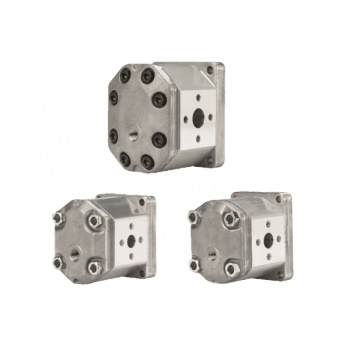Hydraulic motors are essential devices in many industrial and mobile sectors. Their main purpose is to transform hydraulic energy into mechanical energy, using fluid pressure to generate rotational movement. But how does this process work? In this article, we will explore how hydraulic motors work and their applications.
The Working Principle of Hydraulic Motors
The operation of hydraulic motors is based on a relatively simple principle: the pressure exerted by the hydraulic fluid is converted into mechanical movement. The hydraulic fluid is pumped through the system at high pressure, and when it reaches the motor, this pressure is used to generate rotational or linear movement, depending on the type of motor.
The main components of a hydraulic motor include:
- The rotor: the moving part that receives the thrust from the pressurized fluid.
- Blades or pistons: elements that help convert hydraulic energy into mechanical energy.
- The control valve: regulates the fluid flow into the motor, controlling the speed and direction of movement.
These components work together to ensure that the motor operates efficiently, transferring hydraulic power to the machinery or specific application.
Types of Hydraulic Motors

Hydraulic motors come in various types, each designed to suit specific industrial and operational applications. The most common ones include:
- Gear motors: known for their simplicity and reliability, they are used in applications requiring constant speed and moderate torque.
- Piston motors: designed to handle high pressures, making them ideal for heavy industrial applications.
- Vane motors: versatile and easy to maintain, they offer stable performance and are often used in light to medium applications.
Each type of hydraulic motor offers unique advantages in terms of efficiency, power, and durability.
For a complete overview of hydraulic motors and pumps, you can visit the dedicated section on the LubeTeam website.
Applications of Hydraulic Motors
Hydraulic motors are used in various sectors, from heavy industry to agriculture, and even in the automotive industry. They are used in construction machinery, agricultural vehicles, special vehicles, and many other systems requiring reliable and consistent power.
Their ability to provide high power density in a compact design is a significant advantage, making them ideal for applications where space is limited, and an efficient, durable power transmission system is necessary. Moreover, hydraulic motors are less prone to failure compared to other types of motors due to their simple design and the use of hydraulic fluids as the power transmission medium.
Thus, in this article, we have discussed how hydraulic motors work and the different types available.

